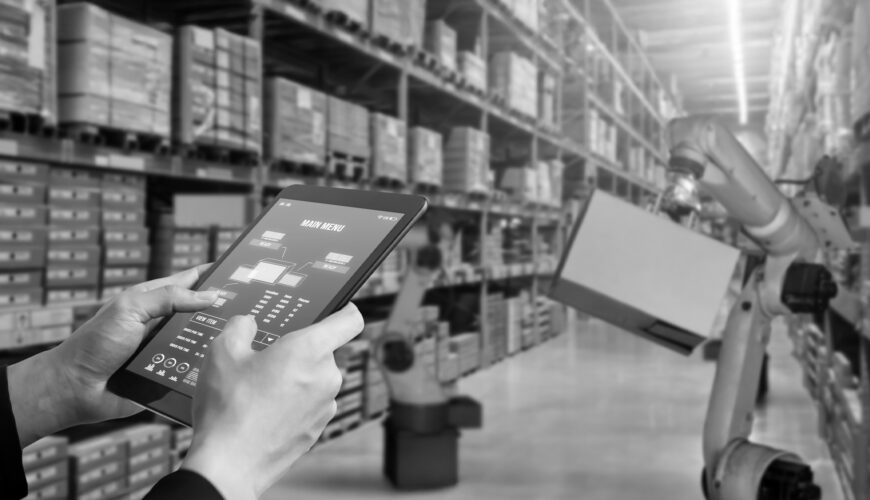In today’s logistics landscape, warehouse optimization software is transforming warehouses from passive storage facilities into the dynamic, data-driven ecosystems at the heart of modern supply chains.
As e-commerce accelerates and customer expectations for speed and accuracy rise, using this technology to create more efficient and responsive operations has become a strategic priority rather than an afterthought. This software empowers organizations to leverage data, automation, and intelligent design to redefine how warehouses function.
Beyond Traditional Management Systems
Traditional Warehouse Management Systems (WMS) focus on tracking, organizing, and controlling stock movement. They’re essential for order accuracy and compliance, but they don’t necessarily improve how efficiently a warehouse runs day-to-day.
Warehouse optimization software builds on that foundation. It analyzes real-time performance data, identifies inefficiencies, and recommends smarter ways to organize labor, space, and workflows. Think of it as a digital operations designer that continuously learns from your warehouse and refines it for peak performance.
These systems don’t just record what happens, they model what should happen. By simulating layouts, forecasting demand, and automating decision-making, they transform reactive warehouse management into proactive design.
How Warehouse Optimization Software Transforms Operations
The benefits of warehouse optimization software extend across every dimension of operations. It can anticipate demand fluctuations, suggest optimal stock levels, and allocate storage based on product movement. It can also reduce travel time by modeling efficient picking routes and streamline labor scheduling to prevent idle time or overtime.
For many organizations, this results in measurable gains, improved fulfillment accuracy, faster order processing, and significantly better space utilization. Managers move from manual problem-solving to strategic orchestration, using real-time insights to keep operations balanced and responsive.
The Technologies Behind the Transformation
Behind the scenes, several powerful technologies make this level of intelligence possible.
Artificial intelligence and machine learning analyze historical and live data to uncover patterns that humans might miss. Internet of Things (IoT) sensors provide continuous updates from the warehouse floor, tracking inventory, equipment, and environmental conditions.
Some platforms employ digital twins, creating virtual replicas of the warehouse to test potential changes safely before making them in the real world. Combined with cloud integration, these tools ensure that data from across the organization, ERP, transportation, and procurement systems work together seamlessly.
Together, these technologies create a connected, transparent environment where decisions are faster, smarter, and increasingly automated.
Warehouse Optimization Software Implementation: A Human and Strategic Process
Despite the sophistication of the technology, successful warehouse optimization depends as much on people as on software.
Before implementing any new system, leading organizations take time to audit existing workflows, identify bottlenecks, and define the metrics that matter most, whether that’s throughput, labor efficiency, or order accuracy.
Training is equally important. Employees must understand not just how to use the software but why it matters. When teams adopt a mindset of continuous improvement, the technology becomes a catalyst for long-term operational excellence.
The Future: Autonomous, Adaptive Warehouses
The next frontier of warehouse optimization lies in automation and autonomy.
Future systems will self-adjust in real time, rerouting workers to avoid congestion, deploying robots to assist during peak hours, or even reorganizing storage layouts based on predicted demand.
This evolution will blur the line between software and operations, creating environments that are self-learning and self-optimizing. Warehouses will no longer be static spaces but intelligent systems that design themselves to meet shifting business needs.
Warehouse Optimization Software Helps In Designing the Flow of Commerce
Warehouse optimization software marks a pivotal moment in supply chain innovation. It represents a move from managing warehouses to designing them, transforming operations into intelligent, adaptive ecosystems.
By combining data, automation, and human insight, this technology enables organizations to deliver faster, work smarter, and operate with precision. The warehouses of the future won’t just store goods efficiently; they’ll shape the flow of global commerce itself.


